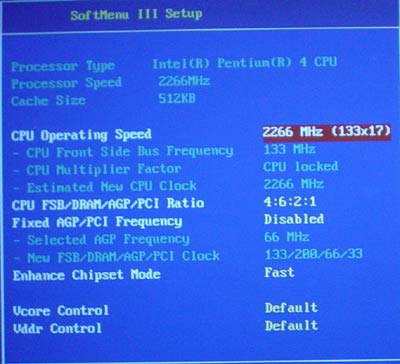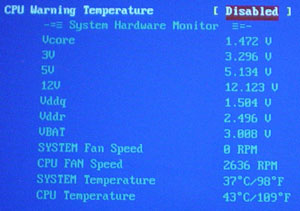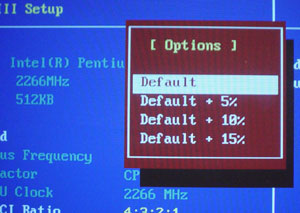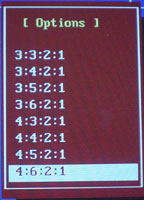ABIT SR7-8X (SiS 648): DDR400-Powered
by Evan Lieb on August 20, 2002 3:07 AM EST- Posted in
- Motherboards
BIOS Setup and Overclocking Features

The SR7-8X utilizes the SoftMenu III BIOS setup utility; this BIOS setup is quite good, mostly due to the fact that there's lots of options and information available for your viewing pleasure. Whether you're talking about the PC Health or overclocking sections of SoftMenu III, there's always some type of useful information to constantly look at.

The SR7-8X, in general, is a fairly tweakable board. Northwood-A and Northwood-B users won't feel restricted by low FSB options with the SR7-8X, as the FSB is adjustable in 1MHz increments all the way up to 200MHz, which is plenty for most overclockers.

In theory, you're supposed to be able to adjust Vcore in the BIOS up to 15% of the default core voltage (1.5V = default Northwood-A/B Vcore), or as high as 1.725V. However, because the SR7-8X sets default core voltage slightly lower (~ 1.47V) than the Pentium 4's true 1.5V default Vcore, the highest attainable Vcore is actually only about 1.7V. In addition, the Vcore is adjustable in only 5% increments, meaning you have just three Vcore options between 1.47V and 1.7V, which isn't terrible but at the same time isn't great either.
Your VDIMM options aren't all that bad though. You can adjust memory voltages up to 2.8V in .1V increments, which should suit even the most serious overclockers. Usually however, it isn't necessary to increase memory voltage a lot unless you're overclocking your CPU and memory way out of spec.
 The
ABIT SR7-8X generally faired well in most of our overclocking tests, but wasn't as spectacular as we had hoped. We were able to push 144MHz FSB using a 2.26GHz Northwood-B
(533MHz FSB) processor. That comes out to a core clock speed of 2.45GHz, or almost a 200MHz
overclock. We used the retail HSF and thermal pad that comes with all retail
Pentium 4 processors and set Vcore to around 1.61V. Going beyond 144MHz FSB
proved unsuccessful even when the CPU was set to the maximum available Vcore
via the SoftMenu III BIOS. There were no other options for increasing Vcore
through onboard jumpers.
The
ABIT SR7-8X generally faired well in most of our overclocking tests, but wasn't as spectacular as we had hoped. We were able to push 144MHz FSB using a 2.26GHz Northwood-B
(533MHz FSB) processor. That comes out to a core clock speed of 2.45GHz, or almost a 200MHz
overclock. We used the retail HSF and thermal pad that comes with all retail
Pentium 4 processors and set Vcore to around 1.61V. Going beyond 144MHz FSB
proved unsuccessful even when the CPU was set to the maximum available Vcore
via the SoftMenu III BIOS. There were no other options for increasing Vcore
through onboard jumpers.
One very nice overclocking feature the ABIT SR7-8X brings to the table is an AGP/PCI lock. All you have to do is go into the BIOS and find the option for "fixing" the AGP/PCI ratio at 2:1. From there, your AGP/PCI buses will run at 66MHz/33MHz no matter how high the FSB is set. Interestingly enough, ABIT also gives you the ability to set your AGP/PCI buses to other higher settings than just 66MHz/33MHz. You could, for example, lock the AGP/PCI buses at 68MHz/34MHz and have the FSB set as high as you want. A pretty nifty feature if you ask us.










0 Comments
View All Comments